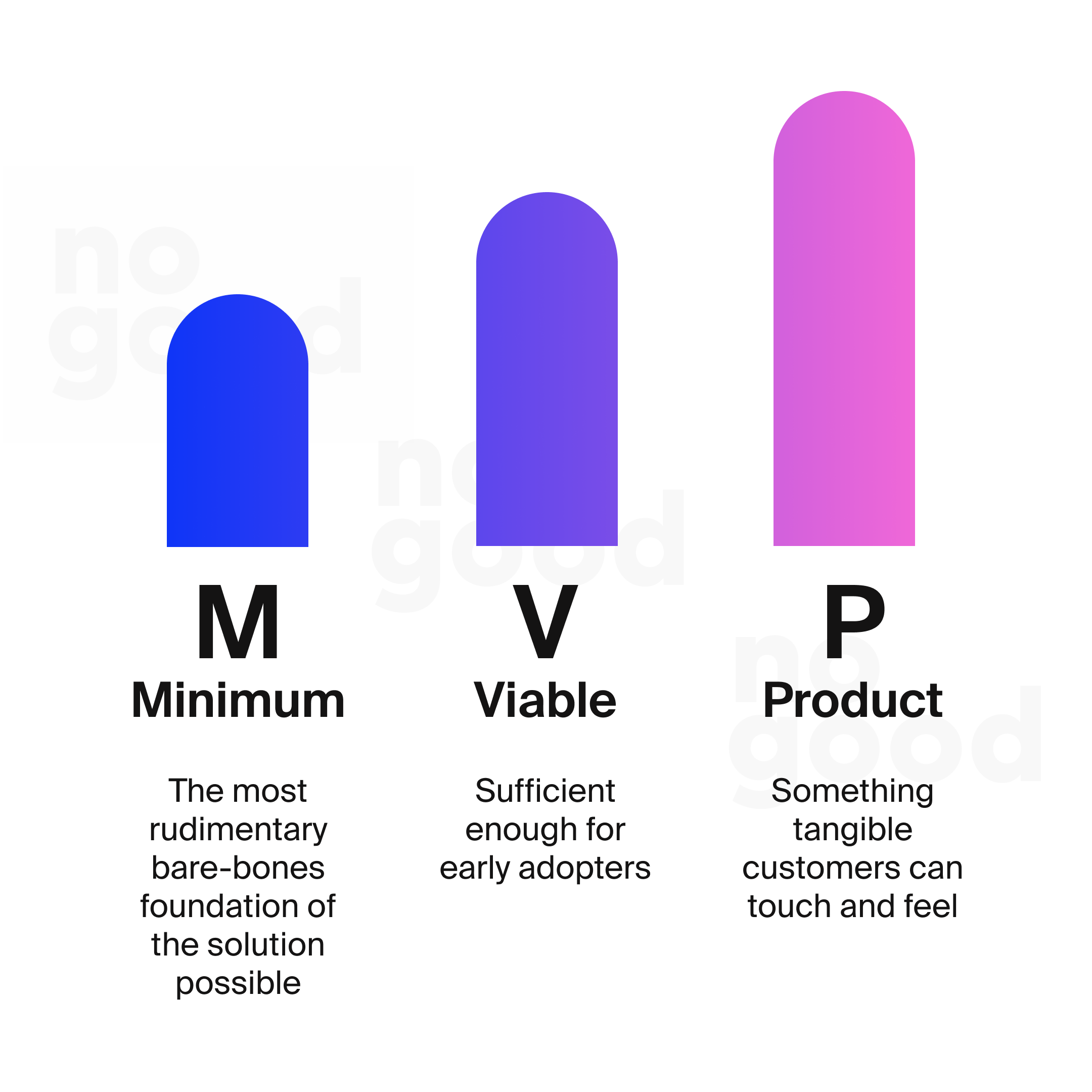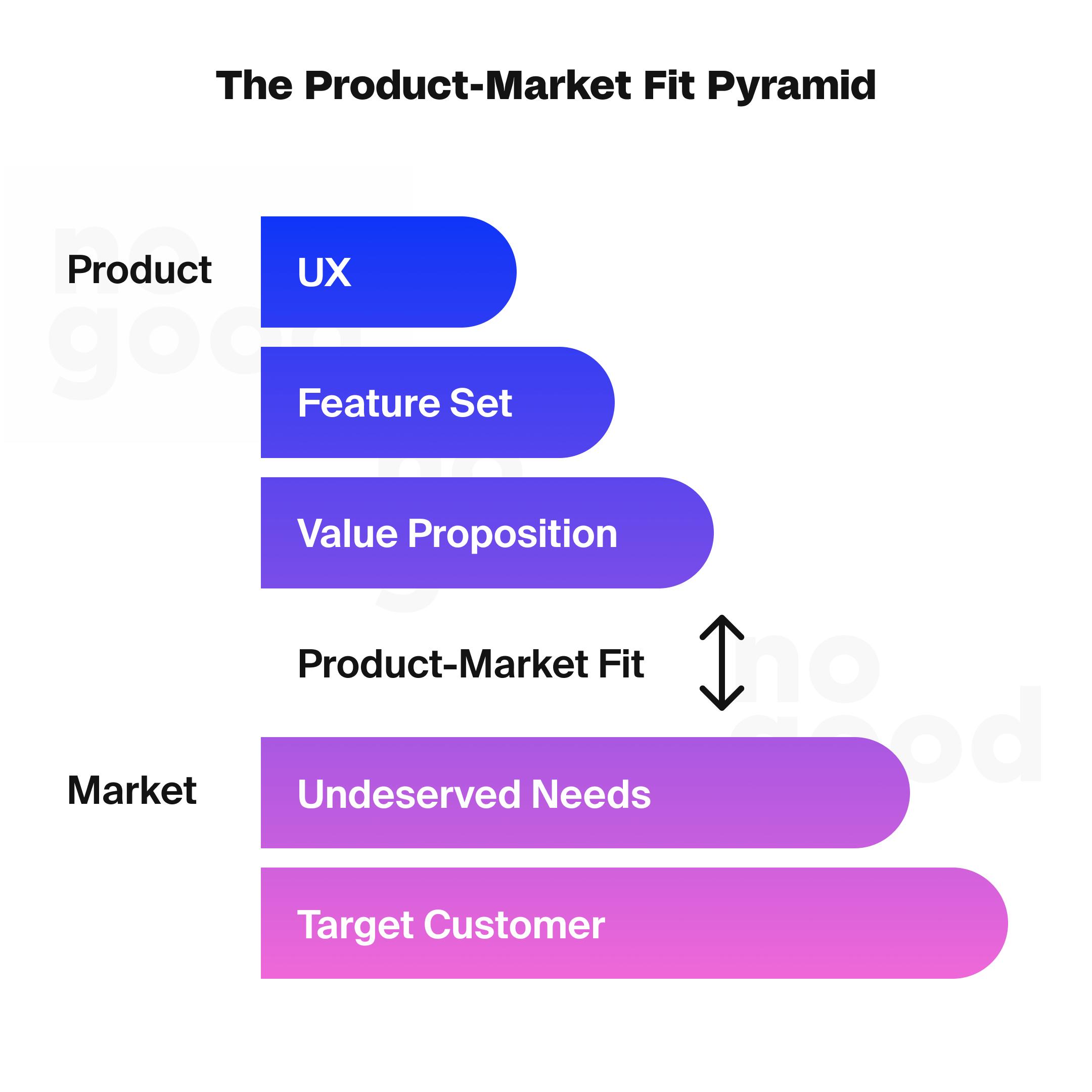Achieving the elusive product-market fit is the existential challenge facing every business owner. The ability to understand and uncover what it takes to create a brilliant product that is so in demand that it continues to outperform its competitors ultimately determines the long-term success of any new idea.
To understand the importance of product-market fit, we must first discuss why most product ideas fail. Whether it be from a lack of market understanding, failure to listen to target customers, or, most common of all, lack of product individuality, startup teams continue to repeat the same mistakes. The startup ideas that survive are born from learning from the failures of others.
What does it mean to achieve product-market fit?
Product-market fit means creating a profitable product that keeps individual users coming back. Whether or not a product is able to encourage ongoing use is often an early indicator of long-term business success. It involves defining the product’s positioning and expressing the product’s value throughout the user journey in a way that solves a unique need for the end buyer persona(s). The product needs to solve this need quicker, easier, and better than any other competitors in the market to be worth investing in.
The conversation around how to achieve product-market fit is coming up more frequently and much sooner than ever before across industries. Increasing competition, changing consumer behavior, shorter attention spans, and rapid innovation cycles make reaching product-market fit increasingly important.
How do you find product-market fit?
Finding product-market fit means being strategic vs. all-encompassing in a brand’s approach to gaining users. This can be broken down into 3 segments:
1. Determine your target audience
For a product to scale, identifying the ideal customer means adopting a tactical, methodological approach to market research. Through this research, a brand must understand potential user needs, pain points, and preferences, along with user behavior. The goal is to determine who the core product is best suited for by analyzing gaps in the market and how the current product satisfies this market demand.
Uber understood the assignment when they took to breaking down their target audience into smaller, more manageable sectors. This granularity allowed them to customize the user experience based on each segment’s needs and preferences, establishing a stronger product-market fit. They focused on customer pain points, motivations, and buying behavior to increase product adoption. Think – Uber pets.
2. Test your product
Create a Minimum Viable Product (MVP) that addresses the needs of your identified target audience. Include enough features to gather feedback and insights without investing large amounts of development hours. Conduct user interviews, collect NPS surveys, and implement rapid experimentation on website marketing messaging, ad copy, and creative to test the usefulness of the product. The primary objective should be to determine what key benefits resonate with the identified target audience and to create a brand’s core value proposition. This is how a brand goes to market.

The key here is to include just enough features for the user to experience the product while keeping them coming back for more. It is important to maintain a level of exclusivity to encourage product upgrades and future monetization. Experiment with gamification to enhance user engagement and help guide the user through the product or service. By incorporating non-disruptive, interactive elements, marketers are able to tap into intrinsic motivations. Increased product usage is more likely to lead to increased retention.
3. Focus on creating an excellent user experience
Based on feedback, iterate and make improvements until each stage of the user journey reflects the voice of the target audience.
To get there, a user journey must be mapped to visualize all steps taken by a particular user to reach a specific end goal while focusing on key drop-off points where the user leaves the product. Drop-off points are areas of opportunity to keep a user engaged with the product. Collaborate through tools like Miro to visualize these journeys. A key differentiation here between a user journey map and a customer journey map, and with the former, we are interested in learning what it takes for a user to convert to a returning customer.
What happens when a user becomes a real customer? The first 30 days determine how likely a product will be able to retain each new customer it gains. To improve product stickiness and product adoption, the user onboarding experience should be focused on reducing time to value. This includes all of the interactions a user first has at the beginning of their customer journey. The biggest challenge brands face is a lack of product understanding. Check out our list of top B2B Saas Tools used to effectively communicate value to the right customer at the right time.

How do you determine if you’ve achieved product-market fit?
When a brand has successfully achieved product-market fit, it should be able to answer the following 3 questions:
Who was this product made for?
Successfully determining who a product is made for means identifying the cohorts of users that are most likely to benefit from the product. Start by conducting extensive customer research to understand the different types of personas that are potential customers. This data can come from many outlets, including surveys, interviews, focus groups, and analyzing market data.
Messaging app Slack’s product-led growth success journey began with nailing down their ideal user base, gathering as much feedback as possible, and constantly iterating on their product to boost user satisfaction. They unlocked what marketers refer to as the key to virality, or a growth loop, where their own users became their biggest advocates and acquired new users on behalf of the brand.
What needs does it solve?
Along with identifying target cohorts comes specifying the problems or needs the product will address. Identified needs should resonate with the target market. Every product recommendation that is developed thereafter should follow this problem-solution framework, where the users’ needs are the driving force.
Stripe is the perfect example of a product that was born out of personal frustration. Brothers Patrick and John Collison identified a common problem that was super simple to explain: why was it so difficult to accept payments on the web? The discovery of this need kickstarted what is now a $50B company. Few products spread this way, but Stripe won by making something customers needed to do very easy.
What makes this product unique?
To survive is to compete, and to compete, a brand must make it painstakingly clear what makes its product better than its alternatives. A product’s specific competitive advantages should again tie back to the identified cohorts of users the product is designed for. Determine the value propositions most likely to resonate with the target customer and incorporate this marketing messaging across all website displays.
Take Notion, for example, who credits their rise to fame to foregoing what they thought they wanted to bring to the world, and instead paying attention to what the world needed from them. We mentioned earlier that the brands that survive are the ones that pay attention to the failures and lessons of others. We can learn from Notion that in order to successfully achieve product-market fit, brands must 1) identify a specific problem, 2) ensure this problem is relatable to those interested in the basic product, and 3) the problem needs to be extremely easy to explain.
If any of these questions remain unsolved, the product is still in the discovery phase.
Qualitative indicators for product-market fit include product advocacy, speed to purchase, and product reviews. How likely are individual customers to recommend the product to their family and friends? As mentioned at the beginning of this article, consumer behavior is constantly changing, and the world is constantly evolving; thus, achieving product-market fit is an ongoing effort for any successful brand or company.
How do we measure product-market fit?
Measuring product-market fit requires meeting at the intersection of science and creativity, but there are ways to assess whether a product has it or not:
- Qualitative feedback: Ask the audience! Customer interviews, surveys, and collecting data via NPS scores are some of the best ways to gauge demand for a product. In addition, this is extremely valuable first-party data for a business to understand where and how a product needs to be improved. Keep in mind achieving product-market fit is an ongoing journey, making understanding how a product is solving the needs of its target audience vital for growth.
- Quantitative metrics: Along with consumer insights, all product changes and enhancements should be data-backed to pinpoint areas with large drop-offs and high impact. Along with customer satisfaction metrics, startups must monitor churn rate, customer acquisition cost (CAC) vs. customer lifetime value (CLTV), usage metrics, and retention rates to determine the success of any product.
- Market validation: The goal of any startup achieving product market fit should also be to unlock multiple self-sustaining growth loops, where customers are finding the product without heavy paid efforts, suggesting a stronger fit. Validate demand by determining how willing users are to refer your product to other users.
- Competitor analysis: How is your product positioned against its competitors? Compare your product’s features, benefits, and user experience against alternatives to confirm your product is still the favorable pick.
Achieving product-market fit is a key milestone for the success and sustainability of any evolving startup. A product that fits the market indicates a genuine demand in the market and is engineered to succeed, meeting the needs of its customer base. Product market fit is the cornerstone that supports the growth and success of any business, along with reducing the risk of bringing a product to market.






